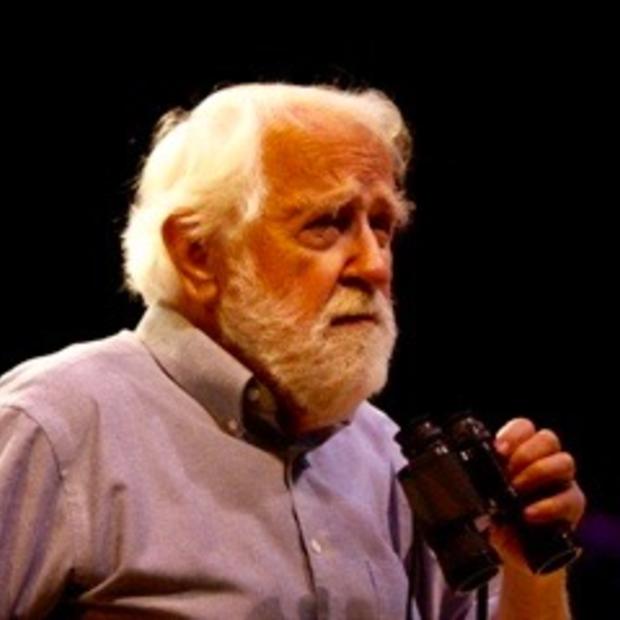It isn't easy to pin down and express the impact of the Western Gallery's new environmental art exhibition. There's irony and outrage, melancholy and hope here, in the work of 26 contemporary Northwest Artists currently on display at the gallery on the Western Washington University campus in Bellingham. There's apocalyptic vision, but also the peaceful sense of nature resurrecting itself.
There'ês so much diversity in the messages and media that it'ês hard to choose any that might be called representative of the exhibition. A few highlights:
• Seattle artist Chris Jordan displays a large, subtly colored photographic abstract of endless variations in shade, a view that soothes until you see it up close and realize you're looking at hundreds of thousands of plastic soft drink bottles, a curse on the natural landscape and a metaphor for our immeasurable waste.
• Craig Langager of Bellingham presents a vulture in fancy feathers with a lobster claw for a beak. The bird perches atop a photographer's tripod, suggestive of the role advertising and promotion have played in degrading the pristine nature of the West. The artist calls it "All Primped and Ready for Wall Street."
• A Cedar stump graces one corner of the gallery, complete with prominent growth rings and the jagged vertical splinters of a tree recently felled. It's the work of Seattle artist Karen Rudd and a symbol of the desecration of nature for the sake of packaging our mundane junk. The sculpture's made entirely of recycled cardboard.
Environmental stress "is a topic that's very critical in the arts today," says Western Gallery Director Sarah Clark-Langager, who is married to Craig Langager. "Thirty years ago there was a lot of talk about environmental art, and a lot of artists dealing with it in public art." But the artists represented in the Western exhibition are "working in their studios rather than in public art, so there's a great variety, whether it's sculpture or photos or painting, or whatever medium."
Clark-Langager credits Prof. Phillip Govedare of the University of Washington School of Art with originating the idea. His "knock on the door" two years ago, Clark-Langager says, is what prompted the exhibition, funded in part by a grant from the National Endowment for the Arts. Govedare's oil-on-canvas paintings in the exhibition convey an ambiguous and disturbing sense of disaster. In his "Flood" from 2009, Govedare presents what might be an aerial view of a vast landscape with wavy, riverine lines demarking a full spectrum of vivid colors, eerily prescient of today's news video from the Gulf of Mexico.
"Phil Govedare came to me and said we need to do an exhibition of environmental art. We approached several museums and some kept saying we ought to do it, we ought to do it, but nothing happened. Finally the grants person [from the NEA] came to me and said, 'You've got a week to get this scheduled,' so I threw up my hands and said 'OK, we'll do it ourselves.' "
"I talked with John Oberantz at Willamette University (in Salem, Ore.) and he said, 'I'll help you. I know you don't have enough money, so we'll do it together.' And I said, 'Let's get Bill to do the writing.' "
That "Bill" would be William Dietrich, Pulitzer prize-winning science writer, novelist, and longtime Seattle Times reporter, who teaches environmental journalism at WWU's Huxley College of the Environment. Dietrich wrote the eight "critical messages" posted throughout the exhibition, summarizing the issues addressed by the art works. He contributed a compelling essay to the classy and colorful catalogue that accompanies the exhibition. The essay, "On the Brink: a Portrait," probes the relationship of art and the environment in ways that could stir any creator or observer of art to "take inspiration from this art to go out and make a difference."
"Technological cleverness has outrun stewardship wisdom," Dietrich warns, "and we look to artists to help us make sense of our handiwork and folly as they contemplate the most dramatic ecological change the planet has experienced since the end of the last Ice Age."
The exhibition, "Critical Messages, Contemporary Northwest Artists on the Environment," remains at the Western Gallery through May 29 (for details including directions click here. It opens at Willamette University's Hallie Ford Museum of Art in Salem on Aug. 27 and stays for two months, moving to the Boise Art Museum in mid-December.
Clark-Langager feels the timing couldn't be better for this sort of message-driven exhibition. The art world and the general public have become highly sensitized to environmental crises, beyond ordinary partisan divisions. "Right now, in any art magazine you open, it has something to do with the environment," she says. "Everything seemed to come together at just the right time."
"It's the fortieth anniversary of Earth Day," Dietrich notes, "and the fortieth anniversary of Huxley College of the Environment. We even arranged for British Petroleum to mark the anniversary with the worst oil spill since the Exxon Valdez."
If you go: "Critical Messages: Contemporary Northwest Artists on the Environment," at Western Gallery, in the Fine Arts Complex at Western Washington University, Bellingham. Hours are: 10 am-4 pm Mondays, Tuesdays, Thursdays, and Fridays; 10 am-8 pm Wednesdays; and 12-4 pm Saturdays.


